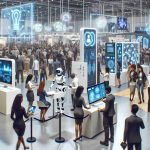A groundbreaking study by a team of researchers led by Professor Kim Dong-jae from Dankook University has unveiled a new understanding of how the brain’s learning principles can revolutionize artificial intelligence research. Instead of perceiving perception and learning as separate brain functions, the team has showcased that they operate under the same mechanism, offering a promising avenue to enhance AI performance.
By analyzing data values of perception and learning neurons in experiments involving rats and monkeys, the team validated that dopamine neurons responsible for learning are structured under the same efficient coding hypothesis as perception neurons. This suggests that dopamine neurons in the brain efficiently reallocate rewards to maximize learning, challenging the conventional belief that perception and learning operate on separate principles.
Professor Kim emphasized the significance of applying the newly uncovered algorithm inspired by human brain mechanisms in artificial intelligence research. By doing so, AI systems could process a wealth of information with minimal energy consumption, marking a significant advancement in the field.
This study, published in the prestigious international journal ‘Nature Neuroscience’ on June 19th, is titled “Reward prediction error neurons implement an efficient code for reward,” signaling a new era in artificial intelligence research.
Exploring the Interplay Between Brain Learning Principles and Artificial Intelligence
A recent development in the realm of artificial intelligence research has shed light on the interconnected nature of brain learning principles and AI algorithms. While the study led by Professor Kim Dong-jae from Dankook University has laid the foundation for this groundbreaking revelation, there are additional facets to consider that delve deeper into the implications and challenges associated with this intersection.
What are the key questions arising from this research?
One important question that arises from this research is how exactly can the application of brain-inspired learning principles enhance the performance of artificial intelligence systems? Understanding the mechanisms by which the brain optimizes learning through efficient coding can offer valuable insights into designing AI algorithms that mimic this process.
Are there any controversies or challenges linked to this revelation?
One challenge that researchers might face in implementing brain learning principles into AI is the complexity of translating the intricate workings of the brain into computationally feasible algorithms. While the study demonstrates a correlation between perception and learning neurons, replicating this functionality in artificial systems may present technical hurdles and limitations.
What are the advantages and disadvantages of integrating brain learning principles into AI research?
An advantage of integrating brain learning principles into AI lies in the potential for developing more efficient and adaptive algorithms that can learn from data in a manner akin to human cognition. By leveraging insights from the brain’s neural mechanisms, AI systems could exhibit enhanced performance and decision-making capabilities.
However, a disadvantage could be the inherent complexity and computational overhead involved in mimicking the brain’s intricate processes. Implementing brain-inspired algorithms may require significant computational resources and expertise, which could pose challenges for widespread adoption and scalability in practical applications.
In conclusion, while the revelation of the interconnected nature of perception and learning in the brain opens up new horizons for artificial intelligence research, there are pivotal questions, challenges, and considerations that researchers must navigate to fully realize the potential of revolutionizing AI through brain learning principles.
For further exploration on this topic, visit Nature, a leading scientific publication that covers cutting-edge research in artificial intelligence and neuroscience.


















